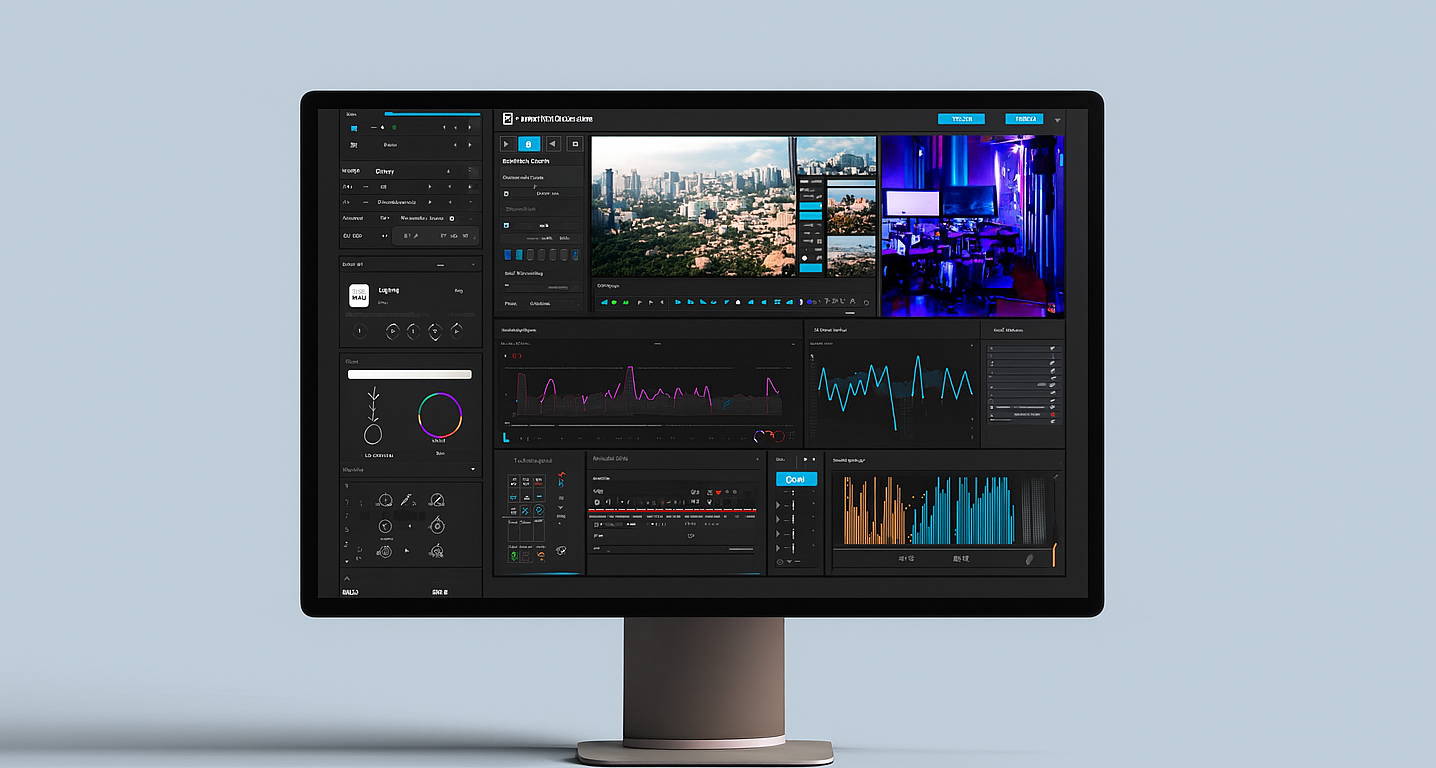Livestreaming has become an integral part of the world of content creation. Influencers use livestreams to interact with their community in real time, whether it’s for a product launch, gaming session, live Q&A or event reporting. To make a livestream work and look professional, you need the right combination of software, hardware and setup.
The market can be particularly confusing for beginners. This article provides a clear overview of proven tools and explains the technical basics of a typical live stream setup. It also makes recommendations for software and hardware to help you get started.
The basic principle: what a live stream setup needs to do
From a technical perspective, a livestream consists of three key elements: a recording device (e.g. a camera or microphone), an encoding tool (typically software such as OBS or Streamlabs), and transmission to a platform such as YouTube, Twitch, or TikTok.
Good image and sound quality are important, as is a stable connection and easy controllability. In the context of influencer marketing, it is important that the setup is not overly complicated, yet still delivers a certain quality that matches the brand.
Software: The control centre of the livestream
OBS Studio and Streamlabs are two of the most well-known live streaming tools. They are both free and a good way to get started.
OBS Studio
OBS (Open Broadcaster Software) is an open source tool that is particularly impressive due to its flexibility. It allows you to set up multiple scenes that can switch between camera, screen recording, overlays or media files. OBS is an excellent choice for anyone who wants to create a customised look or display multiple sources simultaneously.
However, it does require some familiarisation. Nevertheless, it is ideal for those who plan to stream regularly or have a little more technical expertise.
Streamlabs
Although Streamlabs is technically based on OBS, it is specially optimised for use by content creators. It offers a variety of templates for overlays, alerts and widgets that can be seamlessly integrated into the stream. It also has integrated tools for donations, chat moderation and viewer statistics.
Streamlabs is often the first choice for beginners as it offers many preconfigured, intuitive functions. However, if you want more control or better performance later on, you can easily switch to OBS.
Hardware: The right tools for images, sound and connections
The quality of the image and sound is crucial for a successful live stream. Although many platforms already support smartphones, additional devices are recommended for a more professional appearance.
Recommended hardware for beginners
- Camera: Mirrorless cameras and DSLRs usually deliver better image quality. However, a good Full HD webcam is sufficient for beginners.
- Microphone: Clear sound is more important than a perfect picture. A USB condenser microphone is ideal for beginners who want to start streaming.
- Capture Card: If you want to use an external camera, you will usually need a capture card, such as the Elgato Cam Link, to convert the HDMI signal into a format that is recognised by the computer. This device converts the HDMI signal from the camera into a USB signal that is recognised by the computer.
- Lighting: Good lighting can significantly improve image quality. Using a simple ring light or two softboxes helps to evenly illuminate the face.
- Internet connection: A stable connection is essential. For full HD streams, an upload speed of at least 6 Mbit/s is recommended, but 10 Mbit/s or more is better. A LAN connection is more reliable than a WLAN connection.
Additional tools for increased interaction
Interacting with the community is particularly important for influencer livestreams. Tools such as StreamElements, Restream and Lightstream can be used to make the stream more dynamic.
StreamElements, for instance, enables alerts, donation widgets and surveys to be integrated directly in the browser. Restream enables you to broadcast a stream on several platforms simultaneously. This is particularly helpful if you want to increase your reach. Lightstream runs entirely in the browser and is ideal for streamers who want to work on the go or without a powerful computer.
Mobile setups: streaming on the go
If you want to stream events, trade fairs or other on-the-go activities, you need an easy-to-transport setup. While many smartphones today offer decent cameras, for more stable streams we recommend tools such as Prism Live Studio or LIVECORD. These can also be used to implement overlays, chat and platform control while on the move.
Using external microphones for smartphones, such as those from Rode or Shure, will considerably improve the sound quality. Mobile routers or LTE hotspots are also useful if there is no reliable Wi-Fi available.
A well-planned approach is half the battle
If you’re just starting out with live streaming, there’s no need to invest in expensive professional equipment straight away. What’s more important is having a clear understanding of the requirements and a well-thought-out setup that suits your target group. With tools such as OBS Studio or Streamlabs, as well as a good microphone and lighting, you can produce high-quality live streams on desktop and mobile today. If you then interact with the community in a targeted way, you can establish a real connection and stand out from the growing crowd.






